Space News
Brighter Side of News
442

Image Credit: Brighter Side of News
Who wants to live forever? The future of human cryogenics
- Human cryogenics, also known as cryonics, involves preserving the human body at ultra-low temperatures after legal death with the hope of future revival.
- The process includes cooling the body to -196 degrees Celsius using liquid nitrogen and replacing bodily fluids with cryoprotectants to prevent ice crystal formation.
- Companies offer cryonic preservation services, storing individuals in facilities worldwide, despite the concept initially sounding like science fiction.
- Cryonics has been depicted in films and TV shows, reflecting real debates on the feasibility, ethics, and future of human cryopreservation.
- Past scientific efforts towards cryogenics date back to the 1960s, with key milestones in cryopreservation research from the 1940s to present-day advancements integrating nanotechnology.
- Current cryonics organizations include Alcor, Cryonics Institute, KrioRus, and Tomorrow Bio, each offering different preservation methods and services.
- Challenges in cryonics include tissue damage, memory preservation, legal considerations, and financial sustainability, despite advancements in regenerative medicine and AI.
- Critics question the scientific basis of cryonics, while proponents believe in its potential for future medical breakthroughs, making it a controversial investment in the unknown.
- The frozen future of cryonics remains a captivating frontier in modern science, balancing between hope for extended life and skepticism towards its scientific validity.
Read Full Article
26 Likes
Insider
232
Image Credit: Insider
Why 3 private space missions are on their way to the moon right now
- Three private space missions are currently on their way to the moon.
- Intuitive Machines aims to mine minerals and ice beneath the lunar surface for future space missions.
- Firefly Aerospace is testing lunar dust and conducting experiments on the moon's surface.
- ispace plans for permanent human residence on the moon by 2040.
Read Full Article
13 Likes
Medium
424

Image Credit: Medium
Create Stunning Videos Without Any Skills: Here’s How
- Revio is an AI platform that allows users to create high-quality videos without technical skills.
- The platform eliminates the barriers traditionally associated with video production, making it accessible for beginners.
- Users can create viral AI videos in minutes, resulting in significant engagement metrics and potential for business growth.
- Revio offers a cost-effective alternative for video creation, saving users time and expenses compared to traditional methods.
Read Full Article
25 Likes
Nasa
442

Image Credit: Nasa
Sols 4466-4468: Heading Into the Small Canyon
- NASA's Mars rover Curiosity captured detailed images using its Mars Hand Lens Imager (MAHLI), showing varied textures and features suggesting different geological processes at work.
- The merging of images by the rover allows for a broader focus range, aiding in texture analysis, especially useful in high-relief areas.
- In the recent plan, the APXS instrument focused on analyzing the "Trippet Ranch" bedrock and the "San Ysidro Trail" grayish vein for water-rock interaction studies.
- Curiosity's exploration involves studying mesas, walls, and varied textures like those seen in mosaics of regions such as "Lytle Creek" and "Mount Pinos."
- The upcoming journey into a small canyon promises more geological insights, with the rover continuing to analyze changing terrains around Mount Sharp.
- Geologists like Susanne Schwenzer find significance in the wealth of scientific data acquired by Curiosity, aiding in interpreting Mars' geological history.
- The rover's exploration and analysis contribute to understanding past environmental conditions on Mars, such as water or wind's role in shaping the landscape.
- Curiosity's imaging and chemical data collection help researchers uncover the effects of water-rock interactions and alterations in Martian rocks.
- The mission's systematic approach to studying different geological features along the rover's path offers valuable insights into Mars' geological evolution.
- As Curiosity navigates through diverse terrains and prepares to explore a small canyon, the scientific community anticipates further discoveries and data analysis to deepen our understanding of Mars.
Read Full Article
26 Likes
Discover more
TechCrunch
346

Image Credit: TechCrunch
Lonestar and Phison’s data center infrastructure is headed to the moon
- Lonestar and Phison launched a data center infrastructure on a SpaceX rocket heading to the moon.
- The companies plan to create the first-ever lunar data center, starting with Phison's Pascari storage.
- The motivation behind building a space data center is to store data off Earth to protect it from climate disasters and hacking.
- Lonestar aims to collaborate with Sidus Space to build six data storage spacecraft between 2027 and 2030.
Read Full Article
20 Likes
Digitaltrends
299
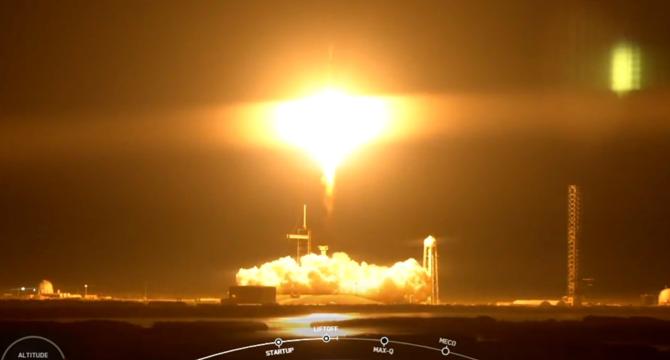
Image Credit: Digitaltrends
SpaceX just launched another mission to the moon
- SpaceX has successfully launched Intuitive Machines’ Athena lander toward the moon in the IM-2 mission.
- A Falcon 9 rocket carrying the uncrewed lunar lander lifted off from Launch Complex 39A (LC-39A) at the Kennedy Space Center in Florida.
- This launch sets a new record for concurrent lunar expeditions, with three separate missions heading to the moon.
- The Athena lander will aim to demonstrate lunar mobility, resource prospecting, and analysis of volatile substances from subsurface materials.
Read Full Article
17 Likes
Earthsky
352
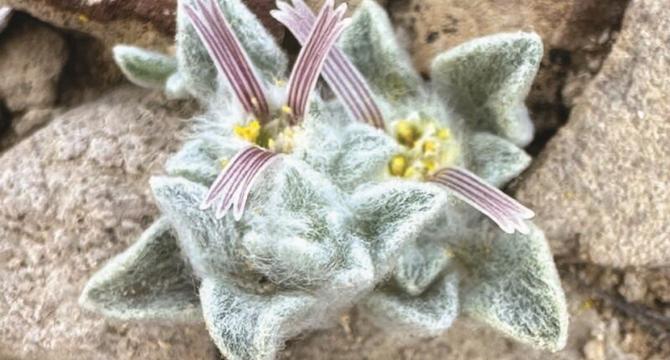
Image Credit: Earthsky
Wooly devil is new plant species discovered at Big Bend
- Big Bend National Park in Texas is now home to a newly discovered plant species called the wooly devil.
- The plant, a member of the Asteraceae family, was found in a remote northern region of the park in March 2024 by staff members.
- Genetic analysis revealed that the plant belongs to a completely new genus within the Asteraceae family, and it was named Ovicula biradiata due to its unique appearance.
- The wooly devil thrives in a harsh desert environment and only blooms after rainfall. The discovery highlights the potential benefits of preserving plant diversity in fragile ecosystems.
Read Full Article
21 Likes
Nasa
360

Image Credit: Nasa
NASA Remembers Long-Time Civil Servant John Boyd
- John Boyd, a long-time civil servant at NASA and its predecessor NACA, passed away at the age of 99.
- Boyd made significant contributions in aeronautical engineering and research, notably in designing wing shapes and improving the efficiency of supersonic bombers and fighters.
- He played a key role in NASA's research programs during the moon landing era and served in various leadership positions at NASA Ames.
- Boyd was a highly regarded public servant, recognized with numerous awards for his exceptional service and contributions.
Read Full Article
21 Likes
Universe Today
164

Image Credit: Universe Today
Perseverance Takes A Second Look At Some Ancient Rocks
- NASA's Perseverance rover is exploring Jezero Crater on Mars, focusing on studying the rim made of ancient rock uplifted by impacts.
- The rover is analyzing rocks in the Tablelands outcrop, including serpentine-rich formations like Silver Mountain and Serpentine Lake.
- Serpentine presence on Mars suggests it was once wet, with potential ancient habitability, as shown by the SHERLOC instrument's findings.
- Perseverance encountered challenges with sampling rocks like Cat Arm Reservoir, leading to empty sample tubes and dust formation.
- The rover successfully collected a core sample from Green Gardens, identifying serpentine minerals formed in the presence of water.
- Perseverance continues to explore the Tablelands outcrop and plans to investigate Broom Point's layered rock formation next.
- Ancient rocks on Mars provide insights into the planet's history, with potential for revealing past water presence and microbial life.
- Future analysis of rock samples may unveil more clues about Mars' geological past and the possibility of ancient habitable environments.
- Perseverance's exploration journey showcases the importance of studying ancient rocks to piece together Mars' complex history and potential for life.
- The rover's determination to uncover hidden secrets from Mars' ancient rocks highlights the ongoing quest for understanding the planet's past and potential for life.
Read Full Article
9 Likes
Nasa
396
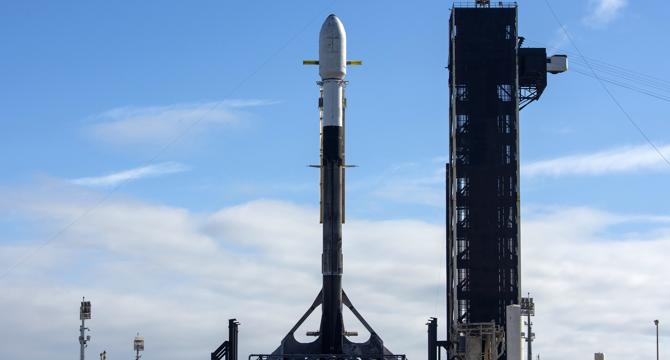
Image Credit: Nasa
Fourth Launch of NASA Instruments Planned for Near Moon’s South Pole
- NASA is planning its fourth CLPS (Commercial Lunar Payload Services) flight in collaboration with Intuitive Machines for the IM-2 mission to deliver instruments to the Moon's South Pole region.
- Scheduled to launch soon, the IM-2 mission will carry NASA instruments including the PRIME-1 suite and the Laser Retroreflector Array (LRA) to study lunar resources and assist in infrastructure development.
- The TRIDENT drill and MSOLO instruments within the PRIME-1 suite will extract lunar soil samples, analyze composition, and measure soil temperature to understand resources and aid future utilization.
- TRIDENT drill will provide insights into lunar regolith properties, aiding in the design of systems for on-site resource utilization, and the MSOLO instrument will detect volatiles like water and oxygen.
- The LRA will enable precision laser ranging for distance measurement on the Moon, assisting in future lunar missions.
- Additional technology demonstrations on IM-2 include a hopping robot named Grace for high-resolution imaging and a Lunar Surface Communications System by Nokia to demonstrate proximity communications.
- NASA's Tipping Point program supports these technology demonstrations, enhancing commercial space capabilities for future NASA missions.
- Future CLPS missions will focus on delivering payloads to various lunar regions to advance lunar exploration, with multiple American companies and vendors involved in sending instruments to the Moon.
- These initiatives contribute to NASA's long-term exploration goals on the Moon and pave the way for future missions to Mars.
Read Full Article
23 Likes
Digitaltrends
86
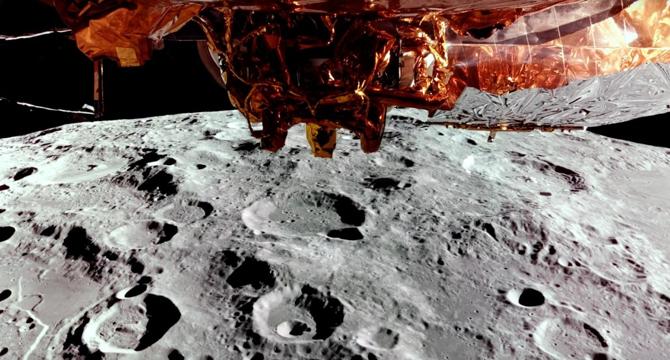
Image Credit: Digitaltrends
Zoom over the surface of the moon in new Blue Ghost low lunar orbit footage
- Firefly Aerospace has shared stunning footage from its Blue Ghost mission.
- The spacecraft is passing within 60 miles of the moon’s surface.
- Blue Ghost is coming in for a landing attempt on Sunday.
- The mission aims to capture data and conduct experiments on the moon.
Read Full Article
5 Likes
Brighter Side of News
401

Image Credit: Brighter Side of News
Gigantic helium deposits may be hidden inside of the Earth’s core
- New research suggests helium can bond with iron under extreme pressures and temperatures, challenging previous assumptions about noble gas reactivity.
- Scientists used a laser-heated diamond anvil cell to demonstrate helium integration into iron's crystal structure at pressures up to 55 gigapascals.
- The findings indicate that helium, instead of remaining separate, can become part of iron's atomic lattice, forming stable compounds like FeHex.
- This discovery sheds light on helium's potential storage in Earth's core, contrary to the belief that it was mainly trapped in the mantle.
- The high helium concentrations found in iron core samples suggest a significant reservoir of primordial helium, altering our understanding of Earth's internal composition.
- The experimental approach, combining high-temperature synthesis and cryogenic analyses, allowed for the detection of higher helium concentrations in iron.
- The presence of helium in Earth's core offers insights into the planet's early development, challenging traditional models of gas loss during Earth's formation.
- This research also hints at the possibility of helium interacting with other volatile elements and contributing to the origin of Earth's water and atmosphere.
- Future studies will explore if helium-iron compounds exist in deeper planetary interiors, impacting our understanding of planetary composition and material science.
- The discovery of helium bonding with iron not only expands our knowledge of Earth's core but also has implications for the development of advanced materials.
Read Full Article
24 Likes
Nasa
132

Image Credit: Nasa
Sols 4464-4465: Making Good Progress
- Over the weekend, NASA's Mars rover Curiosity continued its march along the traverse, driving about 48 meters to the southwest past Texoli butte and Gould Mesa.
- The two-sol plan includes contact science with observations on a nodule block named 'Matilija Poppy', as well as remote sensing activities to assess rock textures and stratigraphy in the vicinity.
- Curiosity is set to drive further south and perform environmental monitoring observations on the second sol, looking for dust devils, monitoring atmospheric dust, and evaluating clouds.
- The team is making good progress as they continue to explore and conduct scientific investigations on Mars.
Read Full Article
7 Likes
Nasa
127
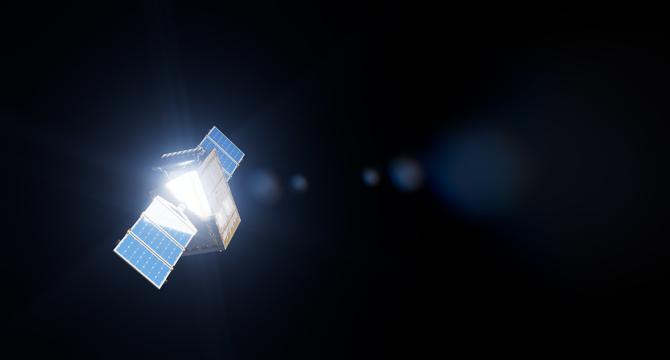
Image Credit: Nasa
6 Things to Know About NASA’s Lunar Trailblazer
- NASA's Lunar Trailblazer mission aims to map the Moon to identify the presence, form, and changes in water over time.
- Expected to launch by Feb. 26, the small satellite will focus on resolving the mystery of the Moon's water.
- The mission will create high-resolution water maps on the lunar surface using advanced science instruments.
- Lunar Trailblazer will employ the High-resolution Volatiles and Minerals Moon Mapper (HVM3) and Lunar Thermal Mapper (LTM) instruments.
- The spacecraft will follow a strategic trajectory utilizing the gravity of the Sun, Earth, and Moon for efficient travel.
- It will investigate the Moon's South Pole craters, which could potentially contain frozen water resources.
- As a cost-effective and high-risk mission, Lunar Trailblazer was selected under NASA's SIMPLEx program.
- The data from this mission will benefit future human and robotic lunar exploration endeavors.
- Led by Bethany Ehlmann, the mission involves key contributions from Caltech, JPL, Lockheed Martin Space, and UK Space Agency.
- Lunar Trailblazer is managed by NASA's Planetary Mission Program Office at Marshall Space Flight Center.
Read Full Article
7 Likes
Teslarati
124
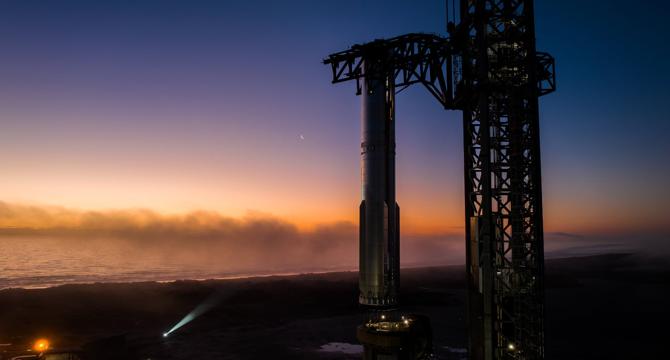
Image Credit: Teslarati
SpaceX explains reasoning for Starship 7 upper stage loss
- SpaceX clarifies the reasons for the loss of the upper stage during the Starship test flight.
- The company identified a flash and a pressure rise in the attic area as indicators of a leak.
- Sustained fires in the attic caused controlled shutdown of Starship's engines, leading to communication loss.
- The most probable cause was a harmonic response that resulted in increased stress and propellant leaks.
Read Full Article
7 Likes
For uninterrupted reading, download the app